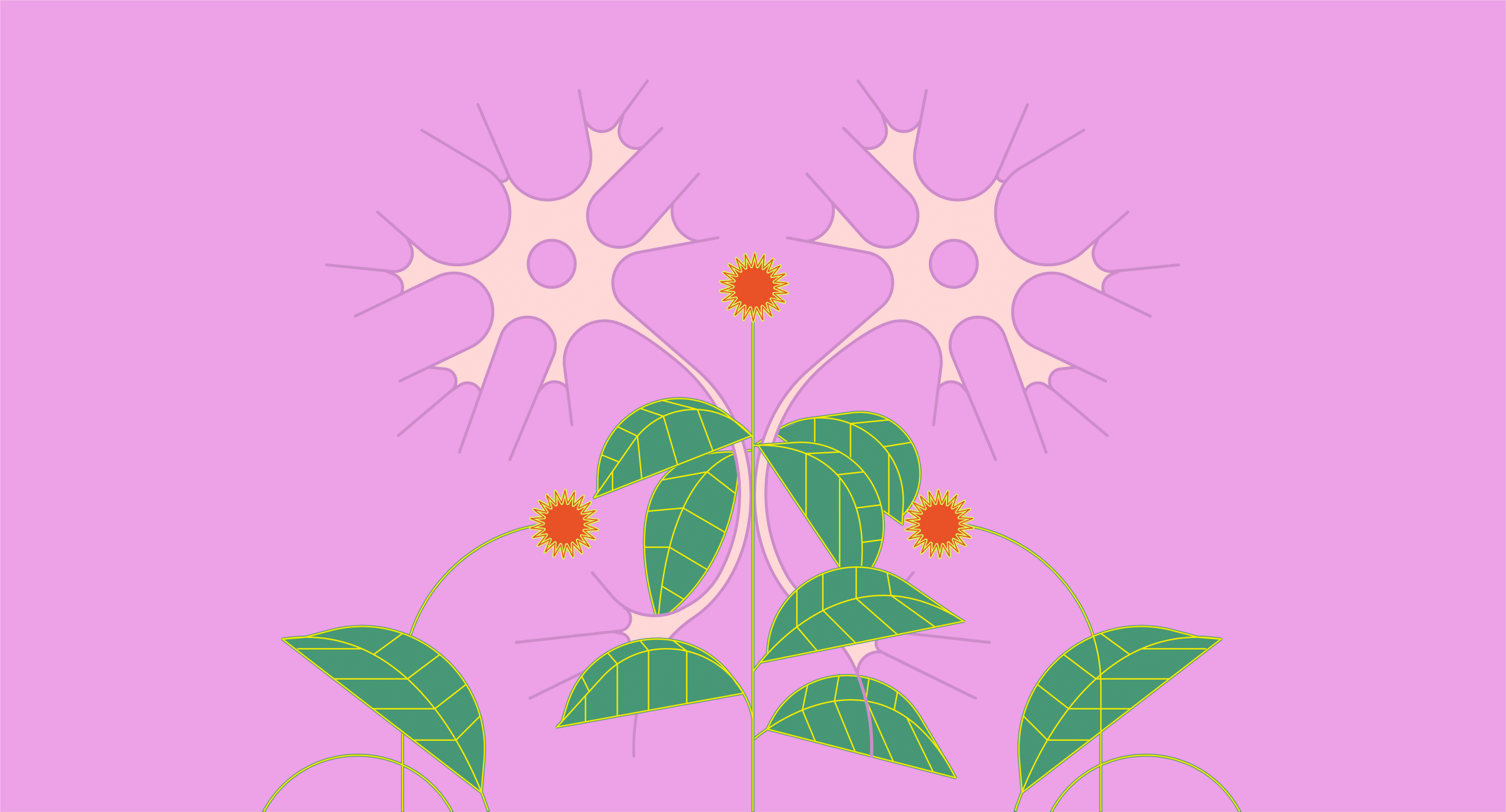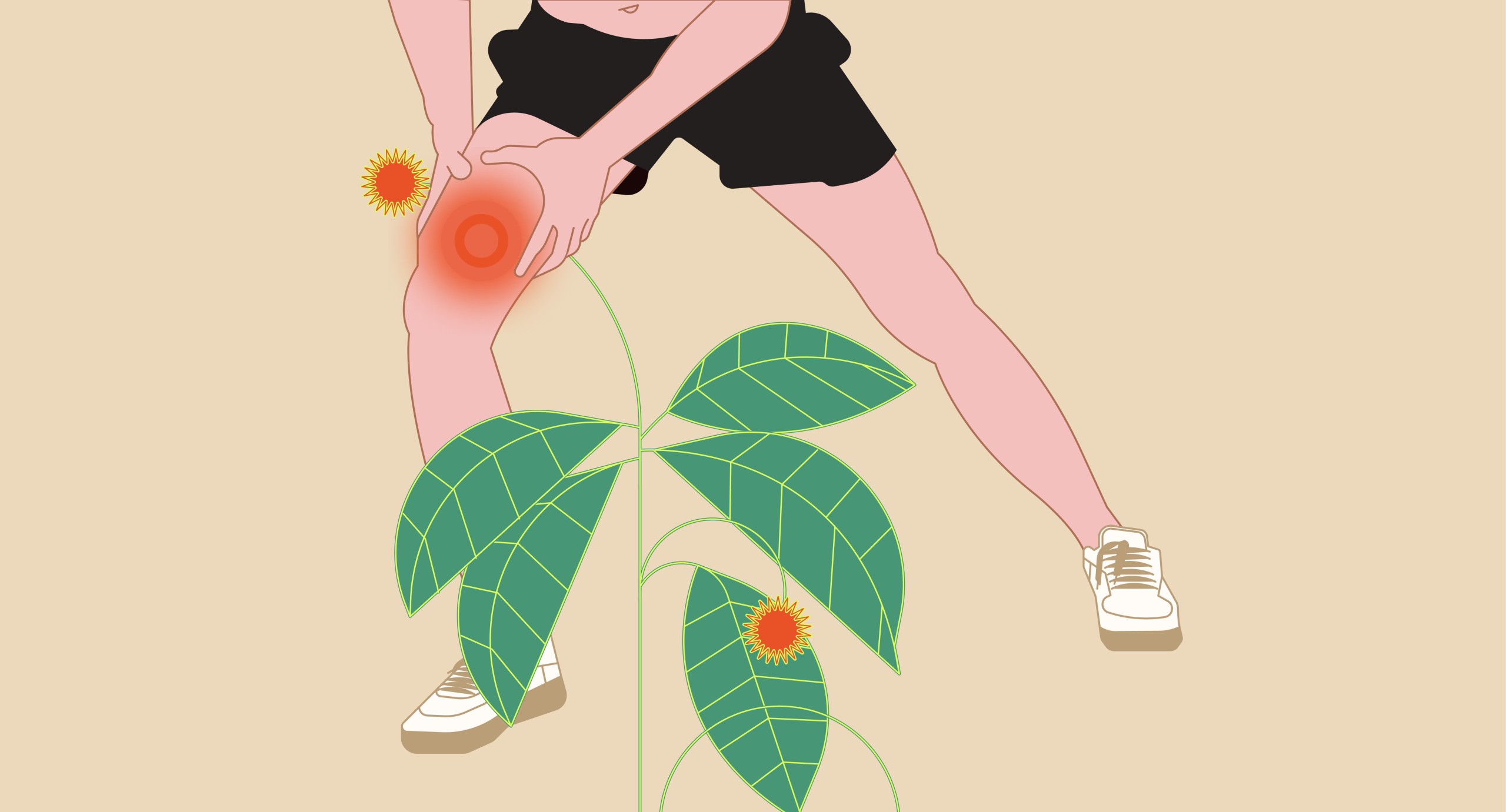What Is Mitragyna Rotundifolia?
Mitragyna rotundifolia has undergone several changes to its name over the centuries [1]. It’s currently synonymous with Bancalus rotundifolius (Roxb) and has been known as Mitragyna brunonis, Nauclea brunonis, and Nauclea rotundifolia.
Common names include:
- Roundleaf Kadamb, the name for the plant in the regions where it grows
- Timi
- Thinglung
- भूमिकदम्ब, in Sanskrit (pronounced Bhumikadamba)
Taxonomy & Botanical Chart
| Kingdom | Plantae |
| Phylum | Tacheophyta |
| Class | Magnoliopsida |
| Order | Gentianales |
| Family | Rubiaceae |
| Genus | Mitragyna |
| Species | Rotundifolia |
M. rotundifolia is a medium-sized tree that prefers growing in dense forests over 1,000 meters in elevation. This is somewhat unique among the Mitragya genus as these plants often prefer to grow in swampier territory. It grows native to several regions worldwide, including Bangladesh, India, Laos, Myanmar, and Thailand.
In India, it grows most abundantly in Meghalaya, Arunachal Pradesh, and especially Assam, where it proliferates exceptionally well in the Barak Valley and Nagaon. In Thailand, it prefers to grow in deciduous forests, amongst other vegetation.
The plant grows with branches that are angled to subterete. The branches are glabrous to glabrescent.
The leaves are simple and rounder than those of kratom, growing opposite decussate. The stipules are elliptic-oblong to ovate and tend to grow between half an inch and two inches long (13-50 mm) and up to one inch wide (5-30 mm).
They are pilosulous, keeled, and can range from obtuse to rounded at their apex. The petioles are glabrous to heavily pilosulous, ranging from 1.5 to 6 cm.
The lamina ranges from 7 to 20 by 4 to 15 cm, and it’s orbicular, ovate-elliptic, and can be either rounded or subcordate at the base. There is an obtuse acuminate at the apex, and the underside has subtle, slight hairs.
M. rotundifolia has a dense amount of inflorescences. They are puberulent to pisulous. They contain peduncles between 0.1 to 0.3 cm that produce flowers of 1 to 5 cm long and are 0.7 to 1 cm in diameter (across the calyces) or 1.5 to 2 cm long when measured across the corollas.
The corollas are a yellowy-white color, glabrous on the outside and extremely hairy on the inside. Their tubes are 0.2 to 0.3 cm in length.
The bracteoles are linear-spatulate, ranging from .0.1 to 0.15 cm. These, too, are glabrous and sparsely pubescent.
The calyx is glabrous. The ovary takes up 0.15 to 0.3 cm.
The fruit produced by the plant is small, between 1-1.6 cm in diameter, producing capsules with weak ridges and tiny seeds of about 1 cm each.
Study & Research on Mitragyna Rotundifolia
Though M. rotundifolia is not under-researched by any means, most information is available only to subscribers of high-end scientific journals or those currently enrolled in academic positions in botany, pharmacology, and the like.
Thus, the information available produces a tangible but far from the fully fleshed-out picture of the character of this plant. The focus has been mainly on its various alkaloids and, in many cases, comparisons between their effects and those of the far more psychoactive M. speciosa, kratom.
M. Rotundifolia Research
Most available research regarding M. rotundifolia involves extracting and analyzing its various alkaloids. Various tools and techniques have been used to observe these alkaloids.
- DPPH Assays. These are among the most popular assays for scavenging alkaloids from plants. It’s accurate and economical, providing a general picture of plant antioxidant activity. It was first used in 1958 and involved the quenching of colored radicals to show the ability of plants or plant compounds to scavenge free radicals.
- ABTS Assays. An ABTS assay kit is generally recommended to observe the antioxidant capacity of a pure substance, an aqueous mixture, or a beverage. The assay requires the production of the blue/green ABTS chromophore.
- FRAP assays. Ferric-reducing antioxidant power assays, sometimes called the ferric-reducing ability of plasma assays, are relatively simple and highly effective quantitative assays for evaluating antioxidants.

The first alkaloids identified in M. rotundifolia were discovered nearly a century ago. Rotundifolie was discovered in 1939 (Barger, Dyer, Sargent, 1939). It was a very productive year for researchers of the Mitragynine genus as they were finally beginning to learn how the various species differed from one another [2].
Since mitragynine was only identified in M. speciosa, the most potent member of the species, it was determined to be one of the culprits responsible for the plant’s morphine-like effects, with 7-hydroxymitragynine being the main one. Numerous other alkaloids were discovered in the early part of the century, and each had its unique purpose.
Researching Rotundifoline’s Alkaloids
The initial discovery of rotundifoline was initially riddled with problems. By the sixties, most of kratom’s alkaloids divide into one of two categories: either indole or oxindole. Rotundifoline proved very difficult to classify.
It wasn’t until the alkaloid isorotundifoline was discovered in 1964 in M. parvifolia and M. stipulosa in 1965 that rotundifoline’s properties could be determined [3].
Isorotundifoline, an isomer of rotundifoline, allowed researchers to observe stark differences between the two similar compounds. Researchers determined that rotundifoline was an oxindole, specifically an E seco oxindole, due to the alkaloidal nature of the various compounds found in Mitragynine plants.
All of the alkaloids have asymmetric centers. These are located at either the C3, C15, or C20 in most alkaloids, although closed E ring alkaloids may also display an asymmetric center at C19. E seco alkaloids, however, may become isomerized due to a double-bonded C16 and C7. Lastly, oxindole alkaloids have their asymmetric center at C7.
Isorotundifoline’s isomerism resulted from the C7 hydrogen placement in rotundifoline, which generally occurs between the C9 and the N4 in the basic alkaloid and is confirmed to be an oxindole alkaloid.
Isorotundifoline possesses some of the properties of phenols due to the difference in its molecular structure, unlike rotundifoline.
Interestingly, this was actually the first oxindole alkaloid to be isolated from any of the species in the Mitragyna genus, although certainly not the last.
During their work, Shellard and Phillipson also identified several other alkaloids in the plant, including rhynchophylline and isorhynchophylline.
Discovery of Alkaloids
Further testing aimed to build on the work of Shellard and Phillipson, including one study on the roots, leaves, and bark of a single M. rotundifolia plant growing in Burma. Samples were collected monthly between September 1972 and August 1973.
Samples were then extracted using the same process described by Shellard and Houghton in 1971. The process, which is not in any article available for public use, allegedly set the standard for the isolation of Mitragyna alkaloids for quite some time [9].
This process led to the discovery of isocorynoxeine, an alkaloid discovered only for the first time, thanks to this research. The alkaloid was isolated by alkalizing the powdered leaves of the plant and using an ethyl acetate extract in the process with sulfuric acid [10].
Other Compounds in Rotundifoline
A 2006 study attempted to isolate as many compounds as possible from the plant using ethanol and butanol-based extraction on the bark. They identified a dozen compounds, all of which were isolated for the first time from the entire genus [7].
These compounds include:
- Dauricine
- 3,4-dihydroxybenzoic acid
- Beta-sitosterol
- Scopleton
- 3,4,5-trimethoxyphenyl-1-glucopyranoside
- Taraxerol
- 4-hydroxy-3-methoxybenzoic acid
- 3-hydroxy-4-methoxybenzoic acid
- Caffeic acid
- Gambirine
- Gambireine
- 1,1-dimetheyl-2-acetyl-diethyl ether
A variety of other compounds have also been identified in the plant. A list of triterpene glycoside compounds identified in M. rotundifolia is in this 2005 publication and includes [8]:
- Quinovic acid 3-O-β-d-6-deoxy-glucopyranoside
- 28-O-β-d-glucopyranosyl ester
- Quinovic acid 27-O-α-l-rhamnopyranosyl ester
- 3-O-α-l-rhamnopyranoside
- Quinovic acid 27-O-β-d-glucopyranosyl ester
- Quinovic acid 3-O-6-deoxy- glucopyranoside
- Quinovic acid 27-O-β-d-glucopyranosyl ester
- Cincholic acid 3-O-β-d-6-deoxy-glucopyranoside
- Cincholic acid 28-O-β-d-glucopyranosyl ester
Medicinal Uses for M. Rotundifolia
The Mitragyna trees all have a long history of medicinal use among the indigenous people in the regions where the various species grow.
Several species grow in West Africa, namely M. spp ciliate, inermis, africanus, and stipulosa. The rest and the majority of the genus (including M. spp parvifolia, speciosa, tubulosa, diversifolia, and our friend for today, M. rotundifolia) populate vast swaths of the Indian subcontinent and Southeast Asia.
Regardless of geographical or cultural foundations, all members of the Mitragyna species have been used medicinally by the people inhabiting the regions where it grows. Though not all cultures use it for the same purpose, there is enough of a general trend to show the ancient peoples’ ability to understand plants based on their properties.
For example, these plants have been used extensively for treating diarrhea, just one of the benefits science has readily confirmed in just about all of the Mitragyna trees.
Traditionally, tribes would often use the bark provided by M. rotundifolia in preparation for their medicine, something we are just beginning to learn about in the west. Recent research has revealed that the bark is, indeed, essential for the pharmacology of the plant.
1. Antioxidant Benefits
One study evaluated the antioxidant effects of six different extracts of Mitragyna rotundifolia. The results were collected using the three assay methods described above.
TheDPPH and the ABTS assays showed the highest antioxidant capacity of the ethyl alcohol extracts performed using the leaf and bark. However, extracts that used n-butanol as a solvent scored higher on the FRAP assay.
Out of all the solvents used, including petroleum ether, ethyl acetate, and n-butanol, it proved the most effective for drawing out antioxidant compounds. The leaves and bark showed a similar antioxidant capacity of all plant parts tested, though the leaves were slightly higher [4].
2. Antidiabetic Benefits
Extracts of the leaves and bark of M. rotundifolia have been tested in vitro for their ability to inhibit a-glucosidase. Alpha-glucosidase is one of the enzymes responsible for breaking down complex carbohydrates into simpler products like glucose, and its activity must be monitored in diabetic patients.
Using a common diabetic medication as a control, both plant parts effectively inhibited a-glucosidase. While not as potent as the control medication, the results were still significant and could indicate M. rotundifolia is an effective agent in herbal diabetic treatments [5].
3. Hepatoprotective Benefits
At least one study has evaluated the effects of an n-Butanol extract on M. rotundifolia bark and leaves. Both were proven to help protect against induced liver damage in mice caused by carbon tetrachloride.

Both extracts were capable of reducing damage in several ways. They decreased glutamic pyruvic transaminase and glutamic oxaloacetic transaminase, both damage indicators. The extracts have “very good” hepatoprotective activity.
Researchers believe this activity may directly correlate with the antioxidants found in kratom [6].
Final Thoughts About M. Rotundifolia
While this isn’t all that the world knows about Mitragyna rotundifolia, it’s about everything that you’re going to be able to find in the public domain as of July 2022.
With the exception, perhaps, of specific volumes and names of chemical solutions used to perform alkaloidal extractions (which are listed in the sources below), we’ve included everything here that you’ll find regarding the round Kadam tree short of traveling to somewhere that it grows and talking with the locals.
They’ll likely confirm what we have (though perhaps without so many syllables): the plant is good for treating various ailments, excelling in wound healing and protection. Both the bark and leaves make good medicine and can be prepared in various ways. As more information enters the public domain, this article may be updated to include up-to-date information.
- Mitragyna rotundifolia (Roxb.) Kuntze in Chinese Academy of Sciences B C, Liu dY (2021). Catalogue of Life China, 2013 Annual Checklist(Biodiversity Committee, Chinese Academy of Sciences). Version 11.1. Chinese Academy of Sciences (CAS). Checklist dataset
- Shellard, E. J. (1974). The alkaloids of Mitragyna with special reference to those of Mitragyna speciosa, Korth. Bulletin on Narcotics, 26(2), 41-55.
- Shellard, E. J., & Phillipson, J. D. (1964). THE MITRAGYNA SPECIES OF ASIA–Part I. The alkaloids of the leaves of Mitragyna rotundifolia (Roxb.) O. Kuntze1. Planta Medica, 12(01), 27-32.
- Gong, F., Gu, H. P., Xu, Q. T., & Kang, W. Y. (2012). Genus Mitragyna: Ethnomedicinal uses and pharmacological studies. Phytopharmacology, 3(2), 263-272.
- Purintrapiban, J., Keawpradub, N., Kansenalak, S., Chittrakarn, S., Janchawee, B., & Sawangjaroen, K. (2011). Study on glucose transport in muscle cells by extracts from Mitragyna speciosa (Korth) and mitragynine. Natural Product Research, 25(15), 1379-1387.
- Fang, G., Zhen-hua, Y., Qitai, X., & Wen-yi, K. (2012). Hepatoprotective effect of Mitragyna rotundifolia Kuntze on CCl4-induced acute liver injury in mice. African Journal of Pharmacy and Pharmacology, 6(5), 330-335.
- Kang, W. Y., Zhang, B. R., Xu, Q. T., Li, L., & Hao, X. J. (2006). Study on the chemical constituents of Mitragyna rotundifolia. Zhong yao cai= Zhongyaocai= Journal of Chinese Medicinal Materials, 29(6), 557-560.
- Kang, W., & Hao, X. (2006). Triterpenoid saponins from Mitragyna rotundifolia. Biochemical systematics and ecology.
- Pandey, R., Singh, S. C., & Gupta, M. M. (2006). Heteroyohimbinoid type oxindole alkaloids from Mitragyna parvifolia. Phytochemistry, 67(19), 2164-2169.
- Houghton, P. J., & Shellard, E. J. (1974). THE MITRAGYNA SPECIES OF ASIA. Planta medica, 26(06), 104-112.








